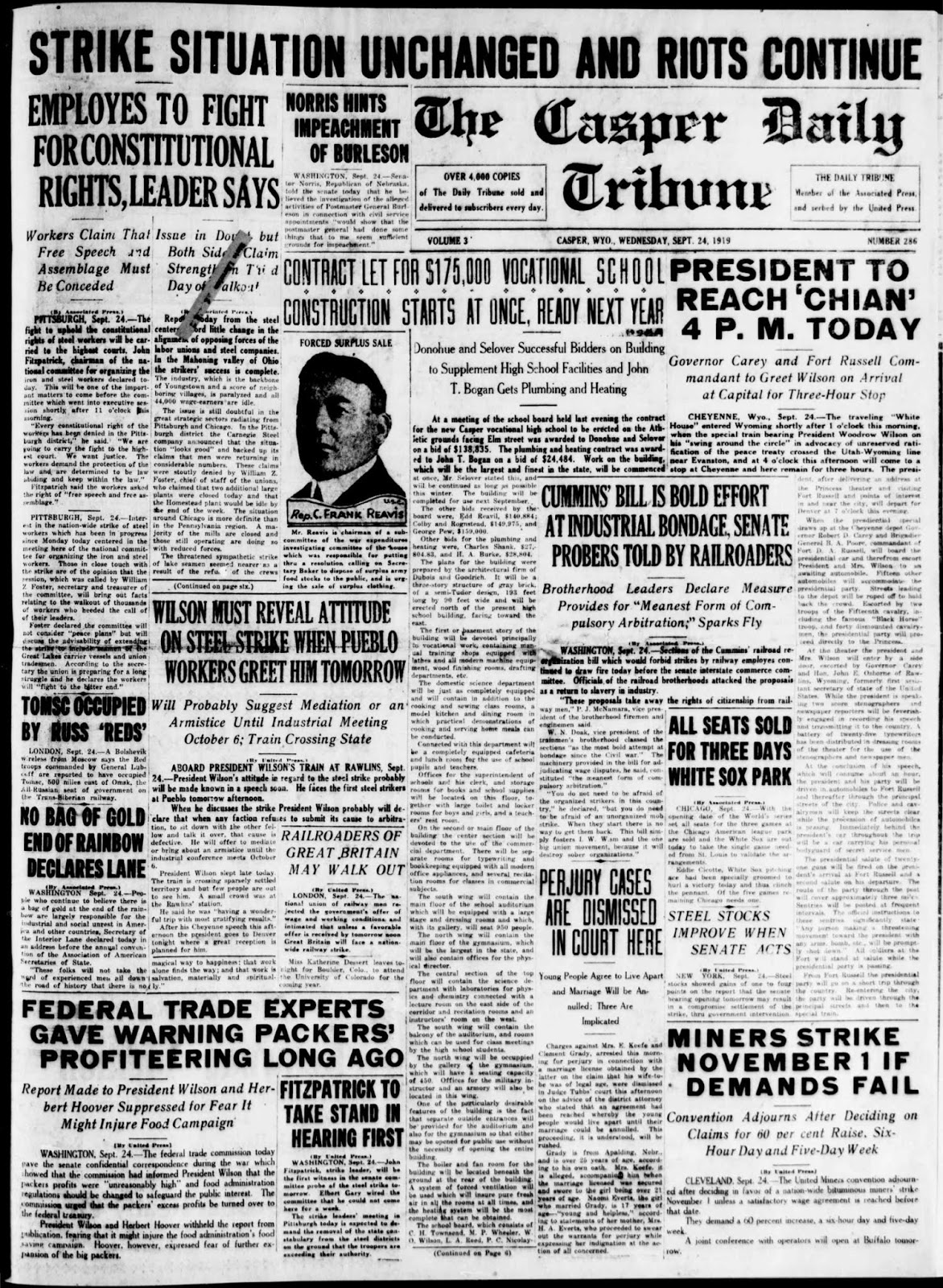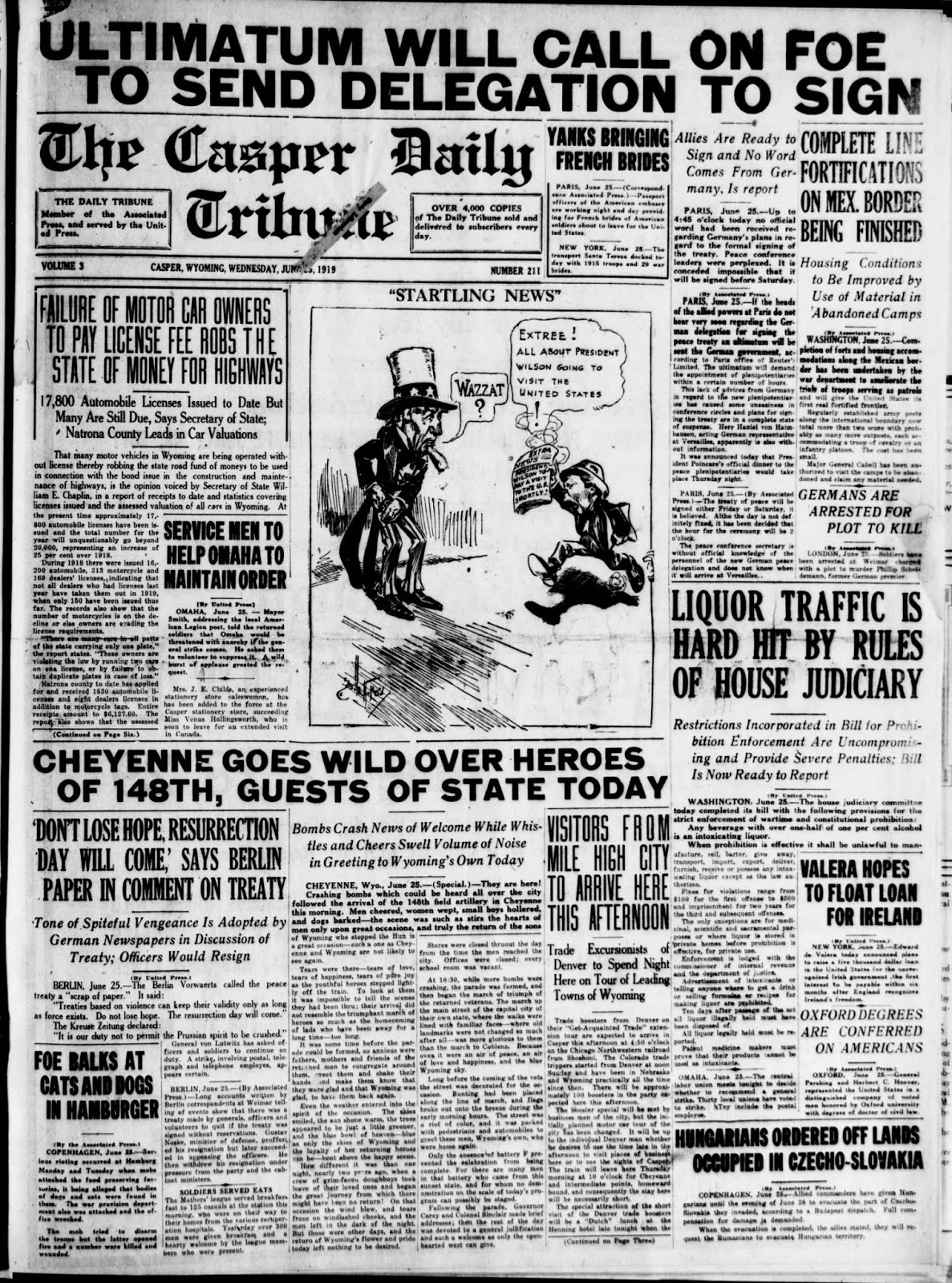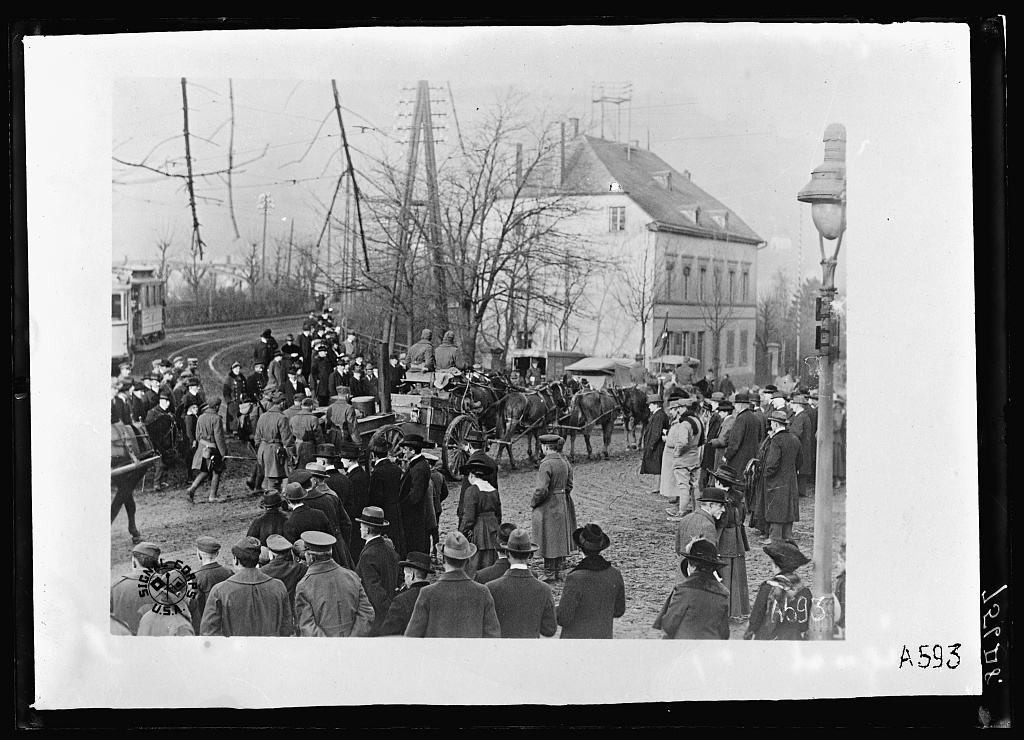There are definitely exceptions to the rule, but generally, I don't try to actually comment much on religion on this weekly post. Having said that, I'm not finding myself doing that in two consecutive weeks with this post, as both this one, and
last weeks, have to deal with trends. This week actually deals with a trend that's the opposite of last weeks.
First, this week's post:

This is Holy Apostles Orthodox Christian Church in Cheyenne, Wyoming. This church was built in 2012 and is located on the edge of Cheyenne.
This church is interesting in several ways, one of which simply the way it is named. The Church is what would normally be called a Greek Orthodox church but presents itself as an "Orthodox Christian" church. This stands in contrast to what we typically find with the various Orthodox churches which usually identify an ethnic component to them, such as Greek Orthodox or Russian Orthodox. Indeed, while the various Eastern Orthodox churches are in communion with each other, they are all autocephalous and there are real distinctions between them at least to the extent that each of them has their own hierarchy.
They are also very traditional in many ways and to find one that doesn't note the ethnic component is simply unusual for them. Also unusual is the design of this church which is highly modern (unfortunately in my view, as I don't care for this external office building appearance).
While not knowing for sure, I suspect that these departures from tradition here were intentional and reflect an effort to deal with a decreasing ethnic component in the Orthodox Churches which they are going to have to deal with in order to survive. At the same time, however, it also may reflect an increased interest in the Orthodox community among traditionalist Protestants of various kinds who have investigated their own churches origins in the wake of numerous doctrinal changes in recent years. There's been a bit of a boom, more than a ripple but less than a tidal wave, of traditionalist protestants coming into the Orthodox Churches, typically the Greek Orthodox Church, as a result of that. This church, in its name and design, seems to be designed with an eye towards accommodating that.
As is obvious, even the original post deals a fair amount with trends, but this is a most interesting one.
To be Orthodox, nearly anywhere, has for much of history, indeed for all of history since the Great Schism, meant to identify strongly with an ethnicity in sort of a unique way. Dated roughly to 1054, the Great Schism was the separation of the Eastern and Western branches of the Church. Except to learned Catholics and Orthodox, the Schism is fairly difficult to understand and my guess is that most church going members of any religion, save for most of the Orthodox and a fair number of Catholics are fairly unaware of it. Indeed, they have to be, as to be quite learned, as a Christian, of the Schism is virtually to require a person to a member of either the Orthodox or Catholic faiths, as a full understanding of it doesn't leave much room to go in any other direction, excepting the Oriental Orthodox (which is yet another topic).
I've dealt with the
Schism here before, and I don't intend to do so again now, but I note it as one of the byproducts of it was to leave the Eastern Orthodox without the head of the Church that they recognized before the Schism, i.e., the Bishop of Rome, as the head of the Church and that has meant, over time, that a lot of national churches have developed. Indeed, while originally the head of the schismatic branch, from a Catholic prospective, was the Metropolitan of Constantinople, today the largest branch of the Eastern Orthodox is the Russian Orthodox Church, which itself has a couple of branches due to the Russian Civil War. I'm not going to go into that, however, either.
What I am going to go into is this interesting trend.
The schism has been remarkably persistent even though the two branches of the Church did manage to reunite in the 1400s before pulling apart again in the late 1400s. While some date the Great Schism to 1054, it can also be tracked, in a way, to 1453 when Constantinople fell to the Ottoman Turks and the Schism seemingly took on its long character. The last Mass celebrated at the Sophia Hagia, it's worth noting, was a Latin Rite Mass as the city fell. Anyhow, since that time the Orthodox churches tended to be highly national in character, while the Latin Rite of the Catholic Church (the Roman Catholic Church) tended not to be, even though there were certainly countries that were, and are, "Catholic Countries". While the latter may be true, there are Roman Catholics in absolutely every country on earth. . . even, it is known, in Christian hostile Saudi Arabia.
So the trend we note above is really an interesting one.
Some Orthodox Christians have noted that as the world globalizes it will not be possible for the Orthodox national churches to remain national churches, and they shouldn't even want to. For the time being, the Russian Orthodox Church, the largest branch, is probably fine being that, but the others are much less so. Interestingly, at the very point at which they really can't do that long term, they're attracting new members, as the post linked in above notes.
The reason has to do with, mostly, converts from Protestantism. There are, to be fair, some converts from Catholicism also, but then there have always been converts from Orthodoxy to Catholicism as well. Indeed, an often missed story is that entire branches of the Orthodox communion have reunited with Rome, which is why there are Ruthenian Catholics and Byzantine Catholics of the Eastern Rite, amongst others. Indeed, at one time large sections of the Russian Orthodox were set to return before events conspired against that, and oddly enough some of the Old Believers have in fact reunited with the Catholic Church.
But Protestant conversions to Orthodoxy is really a new thing.
This has to do with big changes in the various Protestant faiths on doctrinal matters that conservative or simply observant members of those faiths have not been able to accommodate. That's lead to some of those churches to see real divisions among themselves, with the Anglicans in particular exhibiting that. This has lead to those churches splitting into multiple branches. But beyond that, it's also lead to a lot of soul searching in various conservative Protestant groups with the result being that some have determined to become Catholic or Orthodox.
Going from a Protestant denomination to the Orthodox may seem like a huge stretch. The Orthodox are highly traditional, as are Eastern Rite Catholics, in terms of their religious observance. But that trip isn't as odd as it might seem. In this day and age when so much information is available, knowledge on the nature of the early church is readily available, and for students of that, ultimately the choice is left to try to maintain that a person's Protestant denomination maintains Apostolic succession and tradition, or to become Orthodox or Catholic. Becoming Orthodox is a big departure for most from what they're used to, but because it is such a massive departure, to some that trip may be all the more easy to take. As noted here before, even in Wyoming there
was one entire Protestant congregation that made that determination.
The Orthodox seem to be aware of that, and the church depicted above exhibits that knowledge. Orthodox Churches are often highly traditional in appearance, and in fact downright beautiful, and its often easy to identify the ethnicity of the congregation. In this case, neither is true. But the identification of the church as "Orthodox Christian" sends a clear message.
Interesting development.











































